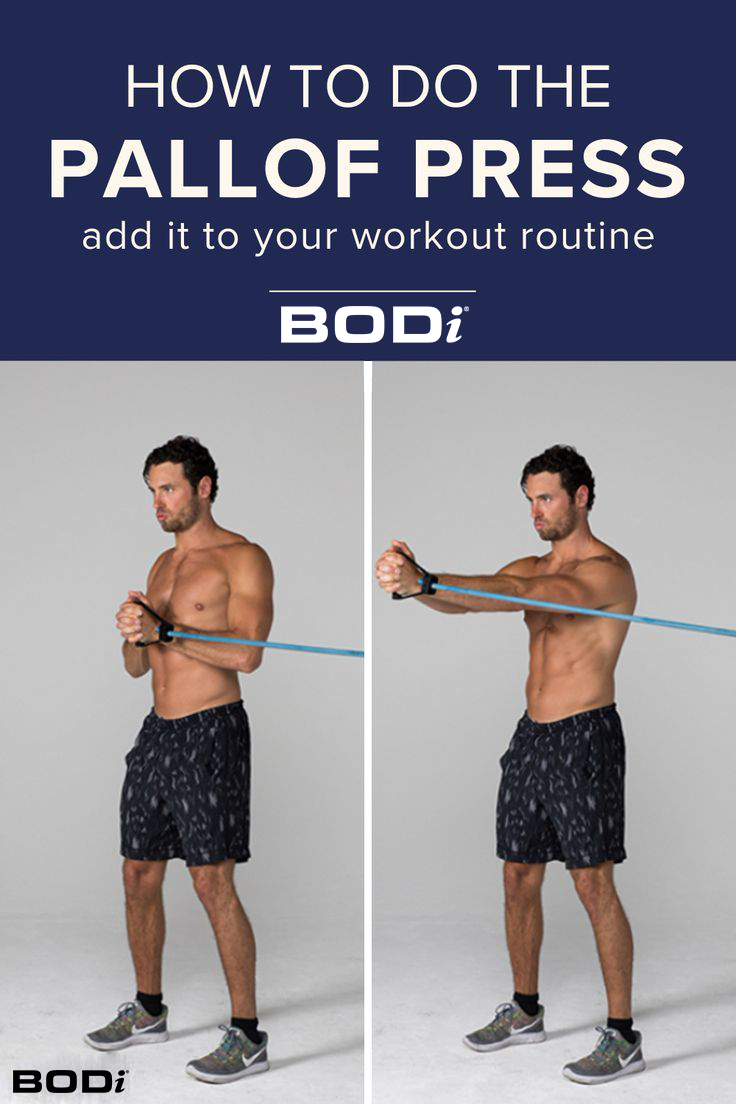How to Do the Pallof Press for Functional Core Strength
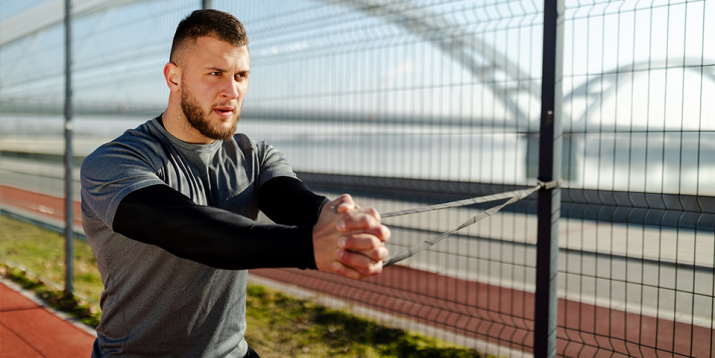
The Pallof press is an easy move to screw up. At first glance, it looks like a chest-builder, a shoulder move, even a mobility drill. In fact, it’s one of the most effective (and neglected) exercises you can do your entire core — not just your abdominal muscles.
Here’s how to do it and why it belongs in your workout routine.
Pallof Press: Step-by-Step Instructions
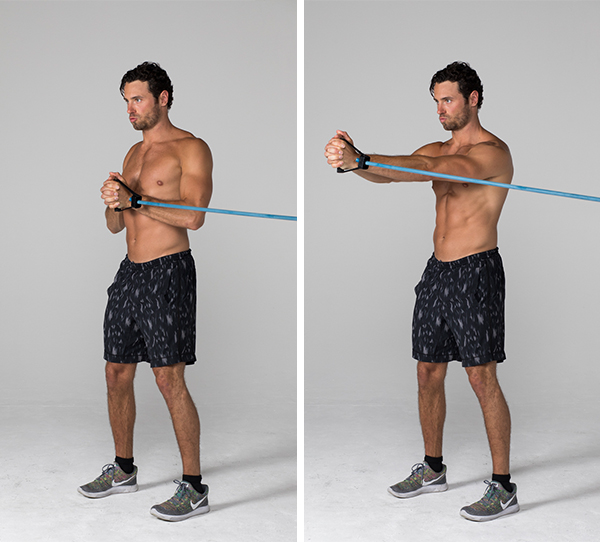
- Fasten an exercise band to a sturdy object at chest height.
- Interlace the fingers of both hands around the free end of the band and step back from the anchor point to create some tension on the band.
- Turn your body so it’s perpendicular to the anchor point and band, hold your hands near the center of your chest, and assume an athletic stance: feet shoulder width and parallel, knees slightly bent, torso upright. This is your starting position.
- Without moving your torso, slowly reach both arms in front of your chest until they are straight.
- Hold this extended position for a five-count, then slowly return to the starting position. Repeat for reps.
- Turn and perform the same number of reps facing the other direction.
Pallof Press Variations
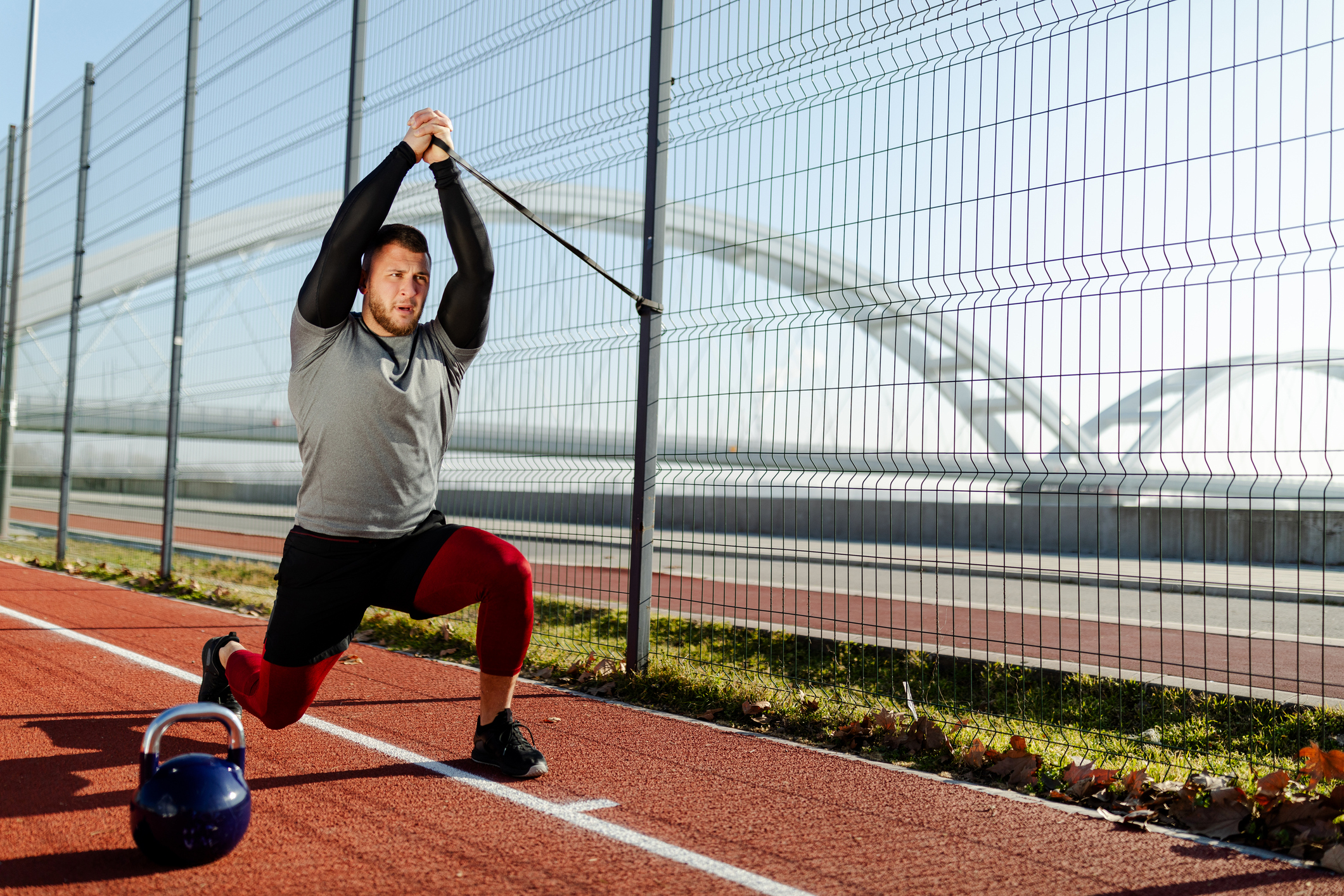
Basic Pallof press variations are about altering body position rather than changing the movement.
- The Kneeling Pallof Press and the Half Kneeling Pallof Press (performed with one knee down and the other foot on the floor) both place subtly different demands on your core muscles, and are good alternatives.
- Stand with your feet closer together. By narrowing your base of support, you place a greater demand on the core and gluteus medius.
- If you have access to a cable machine, you can do the Cable Pallof Press, which allows you to control the resistance more precisely than the banded version described above.
- Finally, you can do Pallof Holds, an isometric exercise where you hold the extended position for up to 30 seconds, a variation that challenges the stamina of your core muscles more fully.
Why Should You Do the Pallof Press?
For many fitness enthusiasts, core training consists of ab exercises like sit-ups and leg lifts, movements that require the spine to flex (bend forward) and extend (bend back). And though the core muscles do help with those movements, flexion and extension aren’t their primary function.
“In general, the job of the core is to prevent unwanted motion,” says Tony Gentilcore, CSCS, owner of Core Training in Brookline, Massachusetts.
Think of carrying a heavy suitcase in one hand or a squirming child: Even though you don’t see much movement in your torso, your core muscles are working hard to maintain your posture and keep you from bending and twisting.
The Pallof press places that same demand on your core: Its primary action is not to create movement but to prevent it.
Because it presents a demand similar to what these muscles encounter in life, Pallof presses are considered more functional — applicable to sport and life — than flexion movements like leg lifts or crunches.
Still, for optimal development and performance, it’s useful to perform many different types of core exercises, including Farmer’s walks, suitcase carries, front and side planks, as well as anti-rotational movements like the Pallof press.
Muscles Worked by the Pallof Press
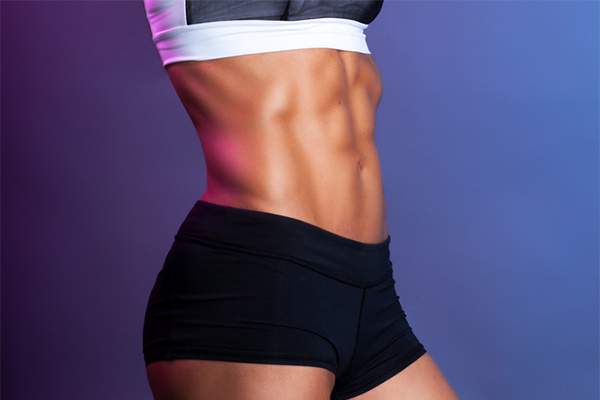
- The rectus abdominis — or six-pack muscle — takes a beating here, pulling the ribcage toward your pelvis.
- The internal and external obliques on the sides of your waist, also contract hard in the Pallof press, keeping your lower side ribs anchored close to your hip bones to help with anti-rotation
- The erector spinae, the thick muscles that flank your lower spine, also fire up to stabilize your torso against the force of the band.
- The transverse abdominis, which wraps around your torso, engages to stabilize your torso.
- The gluteus medius, one of the three muscles of the glutes that runs along the top ridge of your hip bones and attaches to the outside of your hip, is also highly engaged to stabilize the pelvis.
